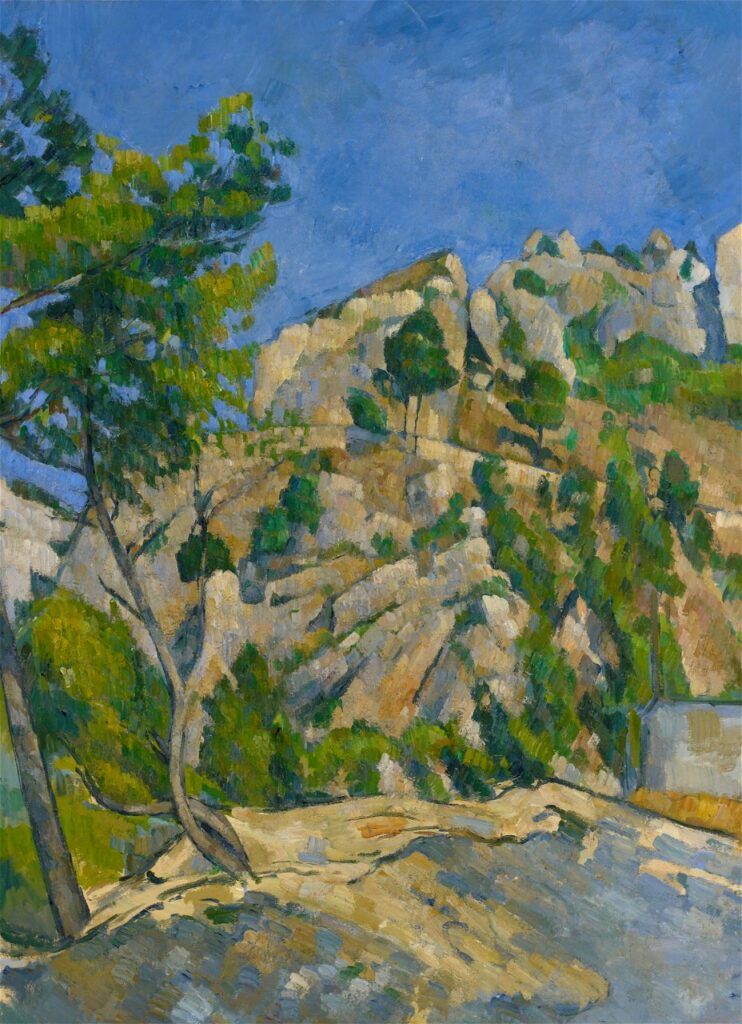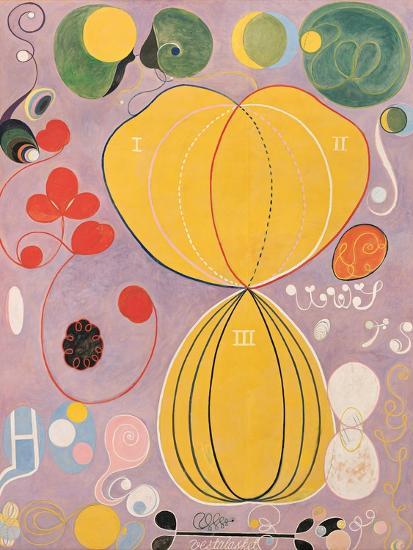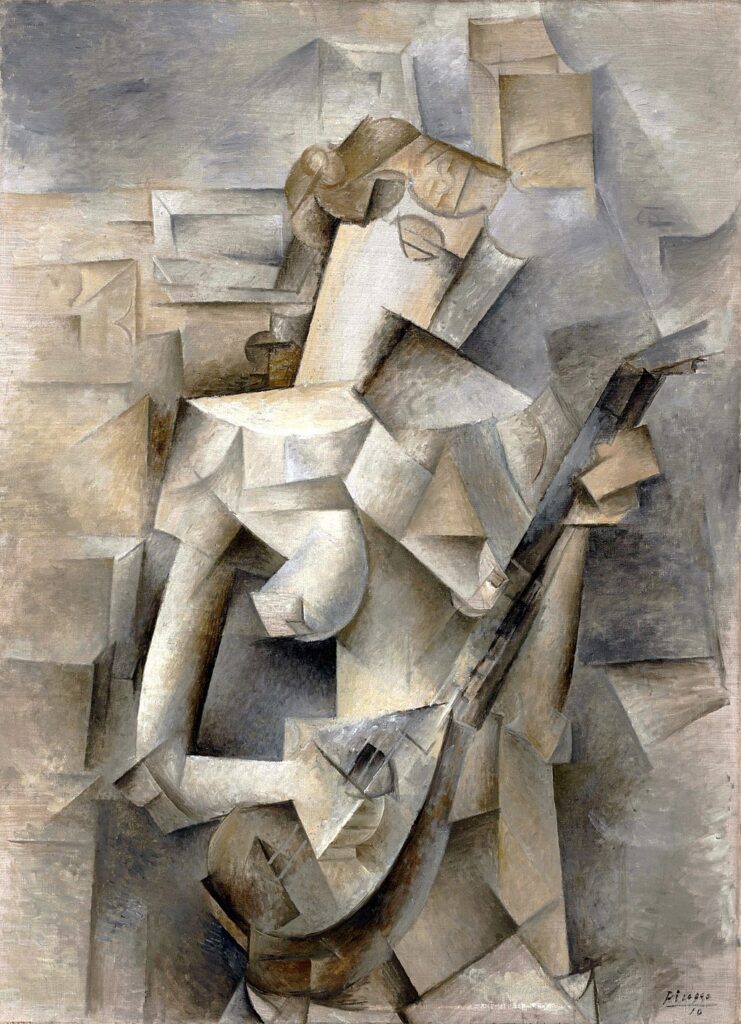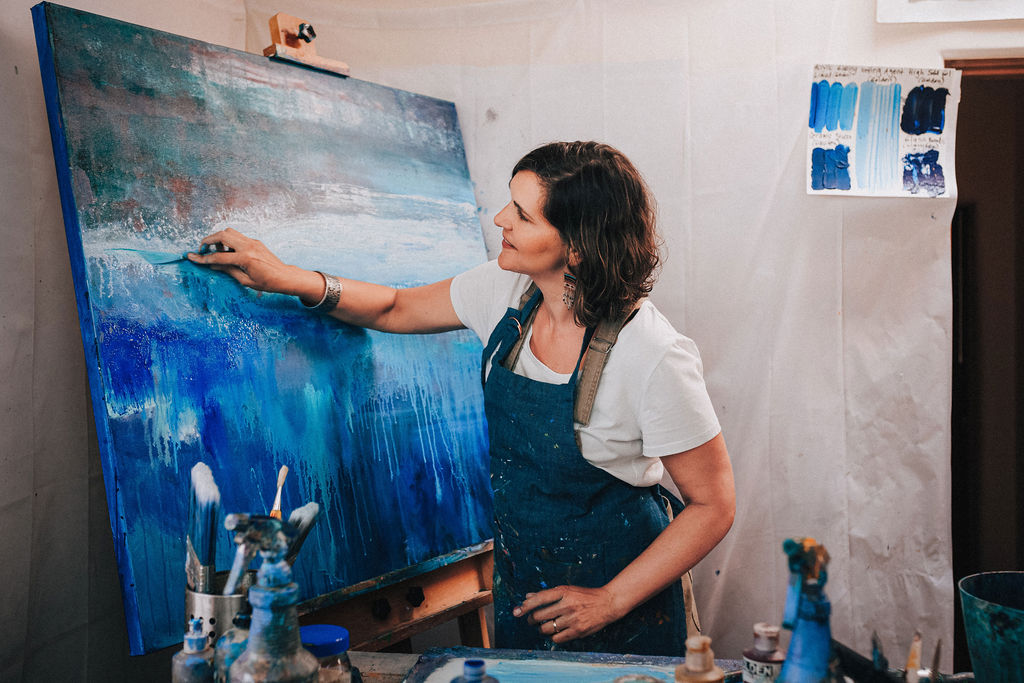Abstract art is one of those things that has a different definition depending on who you talk to. While some define it as art that does not aim to represent anything in reality, others think abstract art comes from abstracting reality. What’s more, some people are upset that abstraction is even considered an art form, claiming that it’s easy to do and that children could do it just as well. So what’s the reality here?
Why I Have an Opinion about Abstract Art
I have been creating art for over 30 years, and have a background in Art History. I do not claim to be an expert, but I do have a strong opinion about this due to my experience as a professional artist in both representational and abstract painting. I started out painting representationally, and moved to abstraction after about 10 years after realizing that I loved the challenge and freedom that abstraction gave me. So allow me to give you my argument for not only what abstract art is, but why it is indeed a complicated and sophisticated art form.
What is the Definition of Abstract Painting?
Abstraction, in its simplest form, is art that doesn’t aim to represent reality. Instead, it focuses on basic elements like shape, color, and composition. It can span from abstracting a landscape, as Paul Cezanne, or total non-representational forms as Piet Mondrian. Regardless, the goal is not to replicate the world as we see it but to explore ideas and emotions that go beyond the literal.

Brief History of Abstract Painting
Let’s start with a bit of history. What made abstraction ground-breaking to begin with, was that for centuries, painting in the West had been about representing forms realistically. Before the camera was invented, wealthy individuals in society would commission artists to paint their portraits. As such, one needed to be wealthy to be visually remembered in society. Realistic paintings of a landscape or still life would showcase an artist’s technical skill. So in the 1870s when the impressionists painted a landscape showing how the light looked during different parts of the day, all in the same painting, and with visible, expressive brush marks instead of precise ones, they caused quite a stir. Impressionism was the first break from representational painting in the West, and since then abstraction has taken many forms.
Who Was the First Abstract Painter?
Many believed that Wassily Kandinsky was the father of abstract painting until Hilma af Klint’s paintings were rediscovered in the 1980s. Klint created the first abstract paintings in the Western world in 1906, and her paintings were the result of “guides” that told her what to do. Kandinsky aimed to create art that was totally removed from recognizable imagery, and painted artworks that expressed emotional and spiritual ideas. Both of these artists created what’s called non-representational art.

Different Interpretations of Abstract Painting
During the early 20th century, other artists explored abstraction in various ways. Pablo Picasso and Georges Braque, pioneers of Cubism, deconstructed figures and objects into geometric shapes. This style presented a new perspective on reality by showing multiple angles at once.
J.M.W. Turner also contributed to abstract art by creating landscapes that emphasized light and color over realistic details. Paul Cézanne’s landscapes, while still recognizable, simplified shapes and colors to capture the essence of the scene. Piet Mondrian, on the other hand, moved towards total abstraction, using geometric forms and primary colors to create compositions that didn’t reference reality at all.
These artists expanded the definition of abstract art, showing that it could range from slightly altered depictions of reality to entirely non-representational works. Their contributions demonstrate the broad scope and potential of abstraction.
Why Abstraction is Misunderstood
Unfortunately, many people misunderstand abstract art due to a lack of education on the subject. This misunderstanding leads some to devalue the art form, thinking it’s something a child could create. But abstract art requires a deep understanding of artistic principles and a high level of creativity.
I currently have a 6 and 8 year old, and I love their paintings, most of which are abstract. I love to watch them paint, throwing colors, shapes and splatters on the canvas without thinking. In the end the paintings are very nice, but are they abstract masterpieces that could be sold? Have they invented a new style? Do they have a series of abstracts that are exploring the same theme, whether it be visually or thematically? No.
And that’s the difference between a child’s one-off amazing abstract, and a highly trained abstract artist who understands the fundamentals of art and design, which must be mastered in order to create a strong piece.
Abstract Painters Revolutionized Art
Jackson Pollock, for example, revolutionized abstract art with his drip paintings. No one had created an artwork of splattered house paint onto a huge canvas before. At first glance, they might seem like random splashes of paint, but Pollock’s work involved careful consideration of movement, composition, and technique. He invented a new style that changed the art world.

Similarly, Picasso’s Cubist paintings were groundbreaking because they presented objects from multiple viewpoints simultaneously. Hilma af Klint’s abstract paintings, rooted in spiritual guidance from voices she heard, were also revolutionary. Each artist brought a unique perspective to abstract art, pushing boundaries and creating new styles. Do you see a pattern here? It’s about invention, originality and creativity paired with artistic skill.
Why it is Hard to Create a Strong Abstract Painting
I agree whole-heartedly with Kandinsky who said: “Of all the arts, abstract painting is the most difficult. It demands that you know how to draw well, that you have a heightened sensitivity for composition and for colors, and that you be a true poet. This last is essential.” I know this from experience. When I first learned how to paint, I copied photographs–some my own, some from others. I learned a lot about color mixing, light and shadows, how to create depth, and many other important fundamentals.
But when I moved to abstraction I was at first enchanted with how fun it was. Now I didn’t have a reference image to pull from. I had to create everything from scratch, considering every element of the composition. I soon realized what makes abstraction a demanding and complex art form.
Conclusion
Many people dismiss abstract art because they don’t understand the skill and thought that goes into it. The belief that “my kid could do that” ignores the years of practice and study required to create strong abstract art. Abstract artists don’t merely throw paint on a canvas; they carefully consider every element to create something meaningful.
Abstract art is not about making something look real. It’s about exploring deeper ideas, emotions, and experiences. This exploration requires a deep understanding of artistic principles and a high level of creativity. Abstract artists push the boundaries of what art can be, creating new styles and expressing complex ideas.
It encourages us to think differently about what art can be. Rather than representing the world as we see it, abstract art explores the unseen—the emotional, the spiritual, and the intellectual.
So, if you’ve ever questioned the validity of abstract art or thought it was something a child could do, I hope this video offers a new perspective. Abstract art is not simplistic or thoughtless. It’s a profound and challenging art form that requires skill, creativity, and a deep understanding of artistic principles. By understanding its history, the diversity of approaches, and the effort involved, we can better appreciate why abstract art is significant and why it continues to be a powerful form of artistic expression.
What do you think? Comment below!
Do you resonate with these tips? If so, I recommend attending my FREE 1-hour training on how to make your abstracts stronger with five pro tips. You can sign up for the training HERE.

ABOUT ANDREA CERMANSKI
I am an artist out of Santa Fe, New Mexico who has been painting for almost 30 years. I love to teach first-timers as well as experienced painters who need a creative reboot. My work has been displayed in several galleries around the country, and I have a Bachelor’s in Art History, a Master’s in Art Education, and had my work in a show juried by Judy Chicago. The idea of getting more people painting makes me light up as I want to inspire more people to express their creative selves and tap into a place of joy and calm.
WANT TO LEARN MORE?
- Subscribe and get one of the FREEBIES below!
- Ebook on How to Move From Representational Painting to Abstraction: 5 Transformative Art Lessons
- Take the Quiz: What Abstract Artist are you Destined to Be?
- 8 Colors Every Artist Should Have: My list of BEST colors to buy and pro mixing tips
- Check out My Online Abstract Painting Course
- Read More Painting Tips Blog Posts
- Check out My Paintings & Art Prints for Sale
- Follow Me On YouTube, Instagram, or Pinterest

Hi Andrea, thanx for your explanation of Abstract Art and the reasons it was bound to grow and become a major force in painting. Like most students in art school, I started painting and drawing what I saw in front of me. Soon – I needed more to my work, so I took some lessons from Sueo Serisowa at the Laguna Beach school of art in the early 70’s. I discovered a new world of mark making that I didn’t know was in me!!! Many people are afraid of what they don’t understand- so whenever I can, I try to explain passages in my paintings- sometimes it helps. I agree with what you have said and I support you and your paintings. Have a Blessed day, Conrad. Please check out my web site at: www. Oceanworksgallery.com.
Thanks, Conrad!
Thank you. I do find abstract difficult, both in structure and in brushwork. I struggle with background, and color interaction. I have been studying Kandinski, whose work I fell in love with at the Guggenheim. Sometimes I cannot give myself the freedom, so I try again.
Yes, keep trying! It took me many years to make a decent abstract, so keep at it!
ABSTRACT ART IS ALSO HIGHLY INTELLECTUAL AND CAN EXPRESS DEEP EMOTIONAL THOUGHTS OR FEELINGS. I HAVE PAINTED ABSTRACTIONS, AND FEEL CLEANSED EVEN SPIRITUALLY EXALTED AFTERWARD. I HAVE A MFA IN ART AND DESIGN FROM UTK AND SCAD. IT WAS VERY COSTLY AND TIME CONSUMING.
Rebecca, Thanks for sharing your experience. I completely agree with you! Abstract art is certainly highly intellectual! I love the idea of feeling spiritually exalted. There is such a freedom we experience when we paint abstractly!
I really like your blog content—it’s been super helpful to me. Thanks a lot! I’ll definitely keep following your future posts.
I am so glad to hear that! More to come:)
Your blog is full of fresh ideas! I’ve been hooked for nearly an hour. Thanks a lot!
It’s years of advice, and more to come, friend. Glad you found it!
That was a great Blog, Abstract art has always been my weakness. Can’t wait to try out new ideas.
So glad it was helpful, Arabella! More to come, so stay tuned!
Hello, I wish you to do works beyond reality… I am Turkish and my English is not good. For me, abstract art is creating a design from an infinite number of undiscovered facts and making it come to life by introducing it to its real counterpart. In other words, it is a new world or universe that has not been discovered. This is possible by being sincere to God, we can reach it with the power we receive from Him… By the way, your article was great, good luck.
I love that description of abstract painting! Thanks for your kind words. All the best to you!
his explanation brings a fresh clarity to abstract art and why it matters so deeply. Thanks for it!